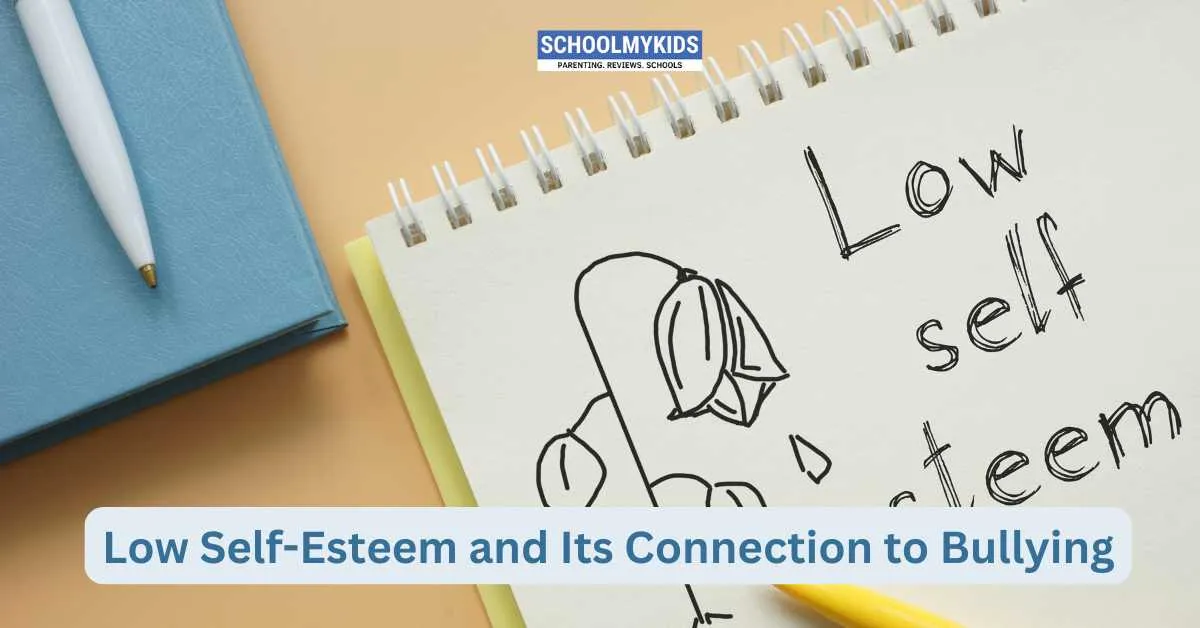Bullying is a pervasive issue that can have far-reaching consequences on a child's emotional well-being. One of the most significant impacts is on self-esteem—a critical component of a child's self-image and overall mental health. Low self-esteem not only makes children more vulnerable to the effects of bullying but can also perpetuate a vicious cycle where bullying further erodes their sense of self-worth. Understanding the connection between low self-esteem and bullying is essential for parents, educators, and mental health professionals in order to develop effective strategies to break this cycle.
Understanding Self-Esteem
Self-esteem refers to an individual's overall sense of self-worth or personal value. For children, self-esteem develops through interactions with family, peers, and the broader social environment. It influences how they perceive themselves, approach challenges, and interact with others. Healthy self-esteem provides the confidence to express oneself, overcome obstacles, and build strong relationships. Conversely, low self-esteem can result in feelings of inadequacy, self-doubt, and vulnerability to external criticism.
The Role of Bullying in Shaping Self-Esteem
Bullying, whether physical, verbal, relational, or cyber, often targets the most sensitive aspects of a child's identity. Repeated negative interactions—such as name-calling, exclusion, or humiliation—can have a profound effect on how children view themselves. Here are some key ways bullying contributes to low self-esteem:
1. Internalization of Negative Messages
When a child is repeatedly subjected to demeaning comments or exclusion, they may begin to internalize these negative messages. Over time, the hurtful words of bullies can morph into self-critical thoughts, leading the child to believe that they are unworthy or inferior. This internal dialogue can be incredibly damaging, reinforcing a cycle where the child starts to expect and even accept mistreatment as a reflection of their own inadequacy.
2. Social Isolation and Rejection
Bullying often results in social isolation, whether by explicit exclusion or by the victim’s own withdrawal from social interactions. When children are left out or ostracized, they may start to question their social value. The lack of peer support not only deepens feelings of loneliness but also diminishes opportunities for positive reinforcement, making it difficult for them to build a robust sense of self-worth.
3. Impaired Academic and Extracurricular Engagement
Low self-esteem can also manifest in reduced participation in academic and extracurricular activities. Children who are bullied may avoid school or social settings where they fear further humiliation. This avoidance can lead to missed opportunities for achievement and positive feedback, further undermining their confidence and reinforcing a negative self-image.
The Vicious Cycle: Bullying and Low Self-Esteem
The relationship between bullying and low self-esteem is often cyclical. Children with low self-esteem may become easier targets for bullies because they are less likely to assert themselves or seek help. Once bullied, their self-esteem can decline even further, making them more susceptible to additional bullying and negative self-perceptions. This cycle can create long-term challenges that persist into adolescence and adulthood, affecting academic performance, social relationships, and overall mental health.
Research Insights
Studies in developmental psychology have consistently shown that children who experience bullying are at a higher risk for developing low self-esteem. For example, research has found that bullied children often exhibit lower levels of self-confidence and a diminished sense of self-worth compared to their peers. Longitudinal studies indicate that the negative effects of bullying on self-esteem can continue well into adolescence and adulthood, contributing to mental health challenges such as anxiety and depression.
Breaking the Cycle: Strategies for Intervention
Addressing the impact of bullying on self-esteem requires a comprehensive, multi-faceted approach. Below are several strategies that can help children build resilience and restore their sense of self-worth.
1. Open Communication
Encouraging open, honest dialogue is vital. Parents, teachers, and caregivers should create safe spaces where children feel comfortable discussing their experiences. Active listening and validation can help children feel understood and supported, countering the negative messages they receive from bullies.
2. Positive Reinforcement
Celebrating achievements—no matter how small—can reinforce a child’s strengths and boost their confidence. Whether it’s through academic successes, creative endeavors, or social interactions, positive reinforcement helps rebuild a positive self-image and combats the internalization of negative feedback.
3. Social Skills Training
Helping children develop robust social skills can empower them to build healthier relationships and stand up for themselves. Social skills training can include role-playing, peer mentoring, and group activities that foster cooperation and inclusion, providing children with practical tools to navigate challenging social environments.
4. Counseling and Therapy
Professional support from counselors or child psychologists can be instrumental in addressing the emotional fallout of bullying. Therapeutic interventions, such as cognitive-behavioral therapy (CBT), can help children reframe negative thought patterns and develop coping strategies to manage stress and build self-esteem.
5. Bullying Prevention Programs
Implementing school-wide anti-bullying policies and programs can create a more supportive environment for all students. Educators who are trained to recognize and intervene in bullying situations can help mitigate the impact on vulnerable children. Programs that promote empathy, respect, and inclusivity can reduce the incidence of bullying and its harmful effects on self-esteem.
6. Parental Involvement
Parents play a critical role in shaping their child’s self-esteem. Regularly engaging with your child, monitoring their social interactions, and reinforcing a positive self-image at home can provide a strong counterbalance to negative experiences outside the home. Empowering children to assert themselves and providing them with strategies to handle bullying can further bolster their resilience.
Long-Term Benefits of Addressing Low Self-Esteem
By taking proactive steps to address low self-esteem caused by bullying, children can break free from the destructive cycle that undermines their potential. With improved self-confidence, they are more likely to engage positively in school, form healthy relationships, and pursue opportunities for growth and success. Over time, these positive changes can have a lasting impact on their mental health, academic performance, and overall quality of life.
Conclusion
Low self-esteem and bullying are intricately linked, with each exacerbating the other in a self-perpetuating cycle. The negative impact of bullying on a child’s self-image can lead to long-term emotional and psychological challenges, including depression and anxiety. However, with early intervention, supportive relationships, and effective strategies tailored to rebuild self-esteem, it is possible to disrupt this cycle. By fostering environments where children feel valued and respected, we can help them develop the resilience and confidence needed to thrive—both in school and in life.








Be the first one to comment on this story.